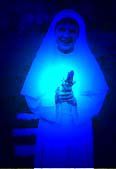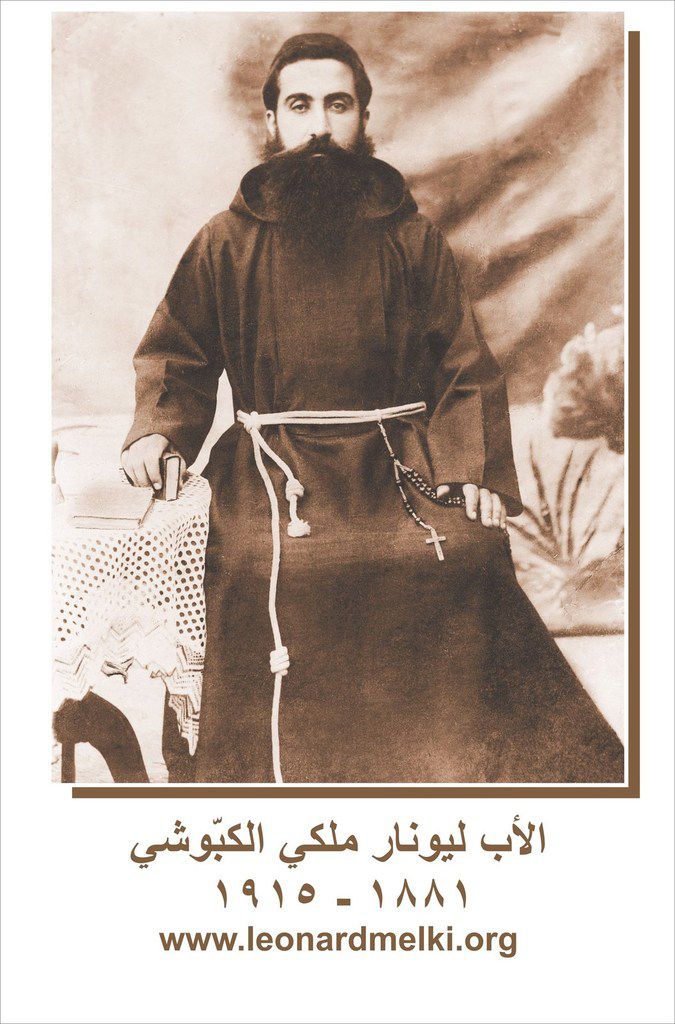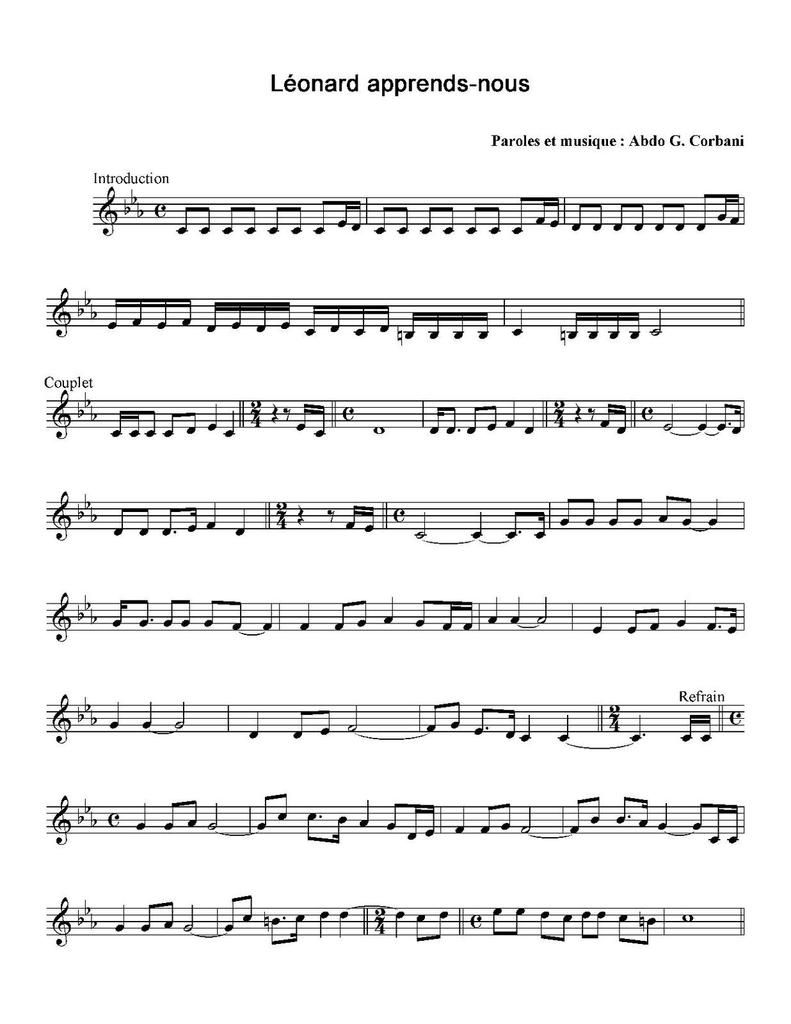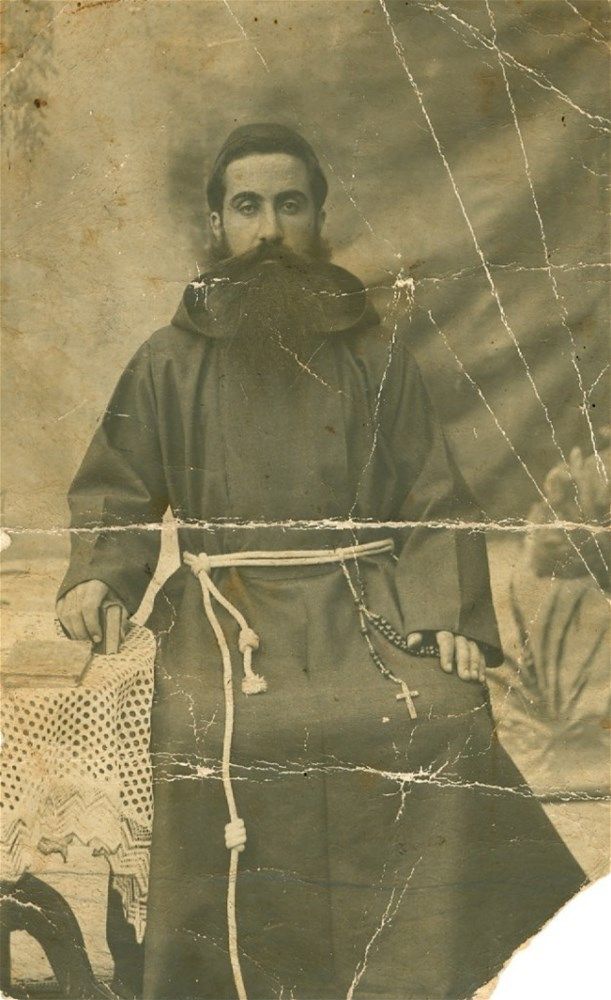
Mariam Baouardy
Sœur Marie de Jésus Crucifié
"La petite arabe", "Le lys de Palestine" ("de Galilée", "de l'Orient")
مريم بواردي , الطوباوية مريم بواردي
פרח המזרח , מרים בוארדי , מרים של ישוע הצלוב
מרים מאעבלין , הערביה הקטנה
née le 5 janvier 1846 à Abellin (I'billin, אעבלין , إعبلين)
(Galilée, District du Nord, Israël-Golan)
morte le 26 août 1878 à Bethléem (Cisjordanie, Palestine)
Cofondatrice du 1er Carmel en Inde et en Terre Sainte

"L’âme qui espère en Dieu sera, par sa miséricorde,
changée en un beau diamant."
"Il n’y a que l’amour qui peut remplir le cœur de l’homme !"
"J’ai soif, j’ai soif de Jésus seul ! Bienheureuses les âmes
qui souffrent en secret, connues de Dieu seul !
Comme j’aime une âme souffrant
avec patience, cachée en Dieu seul !
Une fois que tu as donné quelque chose à Dieu,
tu ne dois jamais le reprendre !"
(traduit de l’anglais le 28 août 2013)
Sœur Marie de Jésus Crucifiée

Prières de la Bienheureuse
Marie de Jésus Crucifié
à l'Esprit Saint
Esprit-Saint, inspirez-moi ;
Amour de Dieu, consumez-moi ;
Au vrai chemin, conduisez-moi ;
Marie, ma Mère, regardez-moi ;
Avec Jésus, bénissez-moi ;
De tout mal, de toute illusion,
De tout danger, préservez-moi.
Venez, ma consolation, venez, ma joie,
venez, ma paix, ma force, ma lumière.
Venez, éclairez-moi pour trouver la source
où je dois me désaltérer.
Une goutte de Vous me suffit
pour me montrer Jésus tel qu’Il est.
Source de paix, Lumière, venez m’éclairer.
J’ai faim, venez me nourrir ;
J’ai soif, venez me désaltérer ;
Je suis aveugle, venez m’enrichir ;
Je suis ignorante, venez m’instruire...
Esprit-Saint, je m’abandonne à Vous.

Église grecque-catholique melkite
Melkite Greek Catholic Church
كنيسة الروم الملكيين الكاثوليك
הכנסייה המלכיתית היוונית-קתולית

Louange à Dieu de
Sœur Marie de Jésus Crucifié
Allons , allons réveiller l’univers !
À l’Amour, mon Amour !
Venez, ô rois de la terre,
Venez , adorons-Le !
Je chante les grandeurs,
La puissance de notre Créateur ;
Venez , adorons-Le !
Car nous sommes l’ouvrage de Ses mains,
Le prix de Son Sang :
Venez, adorons-Le !
Il n’y a pas un Dieu semblable à Lui :
Venez, adorons-Le !
Ne vous arrêtez pas à ce qui est de la terre,
Car tout est néant.
Venez, adorons-Le !
Venez, vous tous qui êtes sur la terre ;
Ne vous arrêtez pas à ce qui est de la terre ,
Car tout n’est que vanité
Et finira en un instant :
Venez, adorons-Le !
Nous ne sommes que voyageurs
Et exilés sur cette terre :
Venez, adorons-Le !
C’est notre Roi , c’est notre Père :
Venez, adorons-Le !
C’est Lui qui a tout créé sur la terre :
Venez, adorons-Le !
Prosternons-nous à Ses pieds,
Donnons-Lui nos cœurs,
Venez, adorons-Le !
Venez Le louer, Le bénir,
Disons de bouche et de cœur :
Il n’y a pas de Dieu semblable à Vous :
Venez, adorons-Le !
Adorons la Trinité qui n’est qu’Un Dieu.
Ô mystère incompréhensible !
Venez, adorons-Le !
Ô Trois immenses qui ne font qu’Un !
Ô puissance !
Venez, adorons-Le !
Car Sa colère est terrible :
Venez, adorons-Le !
L’animal, la bête sauvage
tremblent devant Lui ;
Sa colère fait trembler la terre !
Méchants, venez, adorons-Le !
Sa bonté, sa Miséricorde
Sont pour les justes :
Venez, adorons-Le !
Toute la terre, les bêtes
Se réjouissent dans un profond respect :
Venez, adorons-Le !

Prière à Marie de Sœur Marie de Jésus Crucifié
Aux pieds de Marie, ma Mère chérie,
j’ai retrouvé la vie.
Ô vous qui souffrez, venez à Marie !
Aux pieds de Marie , j’ai retrouvé la vie.
Votre salut et votre vie
sont aux pieds de Marie.
Vous qui dites que je suis orpheline, voyez :
une Mère au plus haut des Cieux.
Heureuse enfant d’une telle mère !
Aux pieds de Marie, j’ai trouvé la vie.
J’habite dans les entrailles de ma Mère ;
j’y trouve mon Bien-Aimé :
Suis-je orpheline ?
Dans le sein de Marie, j’ai trouvé la vie.

Jean-Paul II et Mariam Baouardy
"...Cette “petite Arabe” a été un témoin privilégié de Jésus, de l’amour de l’Eglise, de l’action pour la paix. Et vous comprendrez mieux encore le prix que l’Eglise attache à la vie de vos communautés chrétiennes en Terre Sainte et autour de la Terre Sainte.
Mariam est le fruit de cette Terre Sainte. En elle, tout nous parle de Jésus. Et d’abord les lieux où elle a vécu : Nazareth, près de laquelle elle est née, Bethléem où elle a consommé son sacrifice, le Mont Carmel, symbole de la vie de prière solitaire qui a fourni le cadre de sa vie religieuse. Mais surtout, elle nous rend proches du Calvaire, puisqu’elle n’a cessé de porter dans sa vie la croix de Jésus, tout en choisissant son nom de crucifié. Les béatitudes trouvent en elle leur accomplissement. A la voir, on croit entendre Jésus nous dire : bienheureux les pauvres, bienheureux les humbles, bienheureux ceux qui ne cherchent qu’à servir, bienheureux les doux, bienheureux ceux qui font la paix, bienheureux ceux qui sont persécutés. Toute sa vie traduit une familiarité inouïe avec Dieu, l’amour fraternel des autres, la joie, qui sont les signes évangéliques par excellence.
Sœur Marie de Jésus Crucifié se montre en même temps une fille hors pair de l’Eglise. Elle reflète les différents visages de l’Eglise : l’Eglise grecque-melkite dans laquelle elle a été baptisée et élevée, l’Eglise latine où elle a été initiée à la vie carmélitaine. En dehors de son pays natal, elle s’est insérée dans les communautés chrétiennes du Liban, de l’Egypte, de la France, de l’Inde. Elle a partagé l’ardeur missionnaire de l’Eglise, sa soif d’unité, l’attachement à ses Pasteurs et notamment au Pontife romain Pie IX.
Car l’Eglise doit être une dans la diversité et dans la richesse des langues, des cultures et des rites.
Enfin, elle qui a été souvent malmenée par les événements et par les gens, elle n’a cessé de semer la paix, de rapprocher les cœurs. Elle se voulait “la petite sœur de tous”. Comme son exemple est précieux dans notre monde déchiré, divisé, qui sombre si facilement dans l’injustice et la haine, sans tenir compte des droits des autres à une existence digne et paisible !..."
Extrait du discours du Pape Jean-Paul II aux pèlerins venus pour la béatification de Sœur Marie de Jésus Crucifié, le lundi 14 novembre 1983.
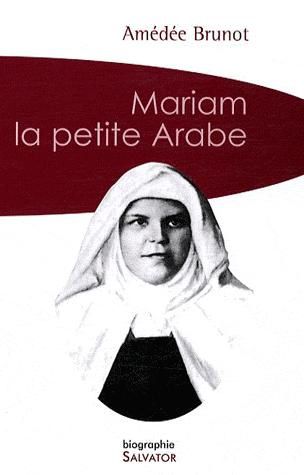
Prière à Sœur Marie de Jésus Crucifié
Seigneur, Père de Miséricorde et de toute consolation,
Tu as élevé la Bienheureuse Marie, l’humble fille de Terre Sainte,
à la contemplation des mystères de Ton Fils,
et tu l’as fait témoigner de l’amour et de la joie de l’Esprit Saint.
Accorde-nous, par son intercession,
de partager les souffrances du Christ
afin de pouvoir nous réjouir à la révélation de Ta Gloire.
Nous Te le demandons par Jésus-Christ, notre Seigneur.
Traduit d’une prière en anglais, le mercredi 28 août 2013.



MARYAM BAWĀRDĪ
BLESSED MARY OF JESUS CRUCIFIED
"The Little Arab", "the Lily of Palestine"

"I thirst, I thirst for Jesus alone! Happy the souls who suffer in secret, known to God alone! How I love a soul suffering with patience, hidden with God alone! Once you have given God something, you must never take it back!"
Blessed Mary of Jesus Crucified
Mariam the Little Arab

Prayers to the Holy Spirit by
Blessed Mary of Jesus Crucified
Holy Spirit, inspire me.
Love of God, consume me.
Along the true road, lead me.
Mary my Mother, look upon me.
With Jesus, bless me.
From all evil, from all illusion,
from all danger, preserve me.
Source of peace, Light,
come and enlighten me.
I am hungry, come and nourish me.
I am thirsty, come and quench my thirst.
I am blind, come and give me light.
I am poor, come and enrich me.

Prayer to Blessed Mary of Jesus Crucified
God, Father of mercy and all consolation,
you raised Blessed Mary, the humble daughter of the Holy Land,
to contemplation of the mysteries of your Son
and made her witness to the love and joy of the Holy Spirit.
Grant us, through her intercession,
so to share in the sufferings of Christ
that we may rejoice in the revelation of your glory.
We ask this through Christ, our Lord.
Louis Massignon and Mariam Baouardy, Blessed Mary of Jesus Crucified


BEATIFICAZIONE DI SUOR
MARIA DI GESÙ CROCIFISSO
OMELIA DI GIOVANNI PAOLO II
Domenica, 13 novembre 1983
« “Ascolta, figlia” . . . (Sal 45, 11).
1. Oggi la Chiesa applica queste parole del Salmo a suor Maria di Gesù Crocifisso, Carmelitana Scalza, nata nella terra che vide lo svolgersi della vita di Gesù di Nazaret; terra che è situata in una regione che anche in questi giorni continua ad essere al centro di gravissime preoccupazioni e dolorose tensioni.
“Ascolta, figlia”. Ecco, nella memoria del Popolo di Dio viene profondamente iscritta la via di suor Maria verso lo Sposo divino. Oggi la Chiesa la incorona con l’atto di beatificazione. Tale atto vuole rendere testimonianza alla speciale “bellezza” spirituale di questa figlia della Terra Santa; una “bellezza” che è maturata nel bagliore del mistero della Redenzione: nei raggi della nascita e dell’insegnamento, della croce e della risurrezione di Gesù Cristo.
La liturgia dice alla nuova Beata: “Egli è il tuo Signore: prostrati a lui” (Sal 45, 12).
E allo stesso tempo con le parole del medesimo Salmo la liturgia manifesta la gioia per l’elevazione agli altari dell’umile Serva di Dio.
“La figlia del re è tutta splendore / gemme e tessuto d’oro è il suo vestito . . .” (Sal 45, 14): tessuto d’oro della fede, della speranza e dell’amore; delle virtù teologali e morali che essa esercitò in grado eroico come figlia del Carmelo.
2. In quest’Anno che la Chiesa vive come Giubileo straordinario della Redenzione, molte volte ci siamo riuniti attorno a figure che hanno raggiunto la gloria degli altari. È un segno particolare della inesauribile potenza della Redenzione, che opera nelle anime dei Servi e delle Serve di Dio, permettendo loro di proseguire tenacemente sulla via della vocazione alla santità.
Questa vocazione ha il suo eterno inizio nel disegno salvifico della santissima Trinità, di cui parla la seconda lettura della Messa: “Poiché quelli che egli da sempre ha conosciuto li ha anche predestinati ad essere conformi all’immagine del Figlio suo, perché egli sia il primogenito tra molti fratelli; quelli poi che ha predestinati li ha anche chiamati; quelli che ha chiamati li ha anche giustificati; quelli che ha giustificati li ha anche glorificati” (Rm 8, 29-30).
In questa grandiosa visuale paolina noi penetriamo, per così dire, nell’intimo stesso del pensiero divino, cogliendo in qualche modo la “logica” del piano della salvezza, nel concatenarsi delle misteriose azioni che conducono alla sua piena attuazione. Così dunque la vocazione alla santità è l’eterno disegno di Dio nei riguardi dell’uomo: nei riguardi, oggi, della nostra sorella Maria di Gesù Crocifisso.
3. La vocazione alla santità, inoltre, è un frutto della rivelazione e della conoscenza. Ne parla con parole penetranti l’odierno Vangelo. Dice Gesù: “Ti benedico o Padre, Signore del cielo e della terra, perché hai tenuto nascoste queste cose ai sapienti e agli intelligenti e le hai rivelate ai piccoli. Sì, o Padre, perché così è piaciuto a te. Tutto mi è stato dato dal Padre mio; nessuno conosce il Figlio se non il Padre, e nessuno conosce il Padre se non il Figlio e colui al quale il Figlio lo voglia rivelare” (Mt 11, 25-27).
La vera sapienza e intelligenza suppone la “piccolezza”, intesa come docilità allo Spirito Santo. Con essa sola è possibile, nel Figlio, per il Figlio e col Figlio, conoscere i misteri del Padre, che restano invece ignoti ai sapienti e intelligenti di questo mondo, accecati dalla stoltezza e superbia (cf. 1 Cor 1, 18-21).
La vocazione alla santità viene attuata da quei “piccoli” del Vangelo che con tutto il cuore accettano la Rivelazione divina. Grazie a ciò “conoscono il Figlio”, e grazie al Figlio “conoscono il Padre”.
Tale conoscenza infatti è, al tempo stesso, l’accettazione della vocazione: “Venite a me . . . Prendete il mio giogo sopra di voi e imparate da me . . .” (Mt 11, 28-29).
Ed ecco che si va a Cristo proprio come a lui è venuta suor Maria di Gesù Crocifisso, cioè prendendo sopra di sé il suo giogo, imparando da lui, perché è mite e umile di cuore, e trovando ristoro per la propria anima (cf. Mt 11, 28-29).
4. E tutto ciò è opera dell’amore. La santità si appoggia, prima di tutto, sull’amore. È il suo frutto maturo. E nella liturgia odierna, in modo particolare, è esaltato l’amore:
- “l’amore, forte come la morte”;
- “l’amore che le grandi acque non possono spegnere”;
- “l’amore, in cambio del quale bisogna dare tutte le ricchezze della propria casa” (cf. Ct 8, 6-7).
Così ne parla l’autore del Cantico dei cantici. E san Paolo, nella lettera ai Romani, insegna che “tutto concorre al bene di coloro che amano Dio” (Rm 8, 28). Proprio questa cooperazione traccia la via della santità, direi, giorno per giorno, per tutta la vita. Su questa via si realizza la santità come eterna vocazione di coloro “che sono stati chiamati secondo il disegno di Dio” (cf. Rm 8, 28).
5. Le letture della Liturgia odierna sono uno splendido commento alla vita di suor Maria, nata vicino a Nazaret e morta nel Carmelo di Betlemme a 33 anni. Il suo amore per Cristo è stato forte come la morte; le prove più dolorose non lo hanno spento, ma al contrario lo hanno purificato e irrobustito. Essa ha dato tutto per questo amore.
L’intera vita della piccola araba, colma di straordinari doni mistici, è stata, nella luce dello Spirito Santo, la risposta cosciente e irrevocabile ad una vocazione di santità, vale a dire a quel progetto eterno di salvezza, di cui parla san Paolo, che la misericordia divina ha stabilito per ciascuno di noi.
Tutta la sua vita è frutto di quella suprema “sapienza” evangelica della quale Dio si compiace di arricchire gli umili e i poveri, per confondere i potenti. Dotata di grande limpidezza d’animo, di una fervida intelligenza naturale e di quella fantasia poetica caratteristica dei popoli semitici, la piccola Maria, non ebbe l’opportunità di accedere ad alti studi, ma ciò non le impedì, grazie alla sua eminente virtù, di essere ripiena di quella “conoscenza” che ha il massimo valore, e per donarci la quale Cristo è morto in croce: la conoscenza del Mistero Trinitario, prospettiva tanto importante in quella spiritualità cristiana orientale, nella quale la piccola araba era stata educata.
6. Come si legge nel Decreto canonico di beatificazione, “l’umile serva di Cristo, Maria di Gesù Crocifisso, appartenendo per stirpe, rito, vocazione e peregrinazioni ai popoli dell’Oriente ed essendone in qualche modo rappresentante, è come un dono fatto alla Chiesa universale da coloro che, nelle misere condizioni di lotta e di sangue nelle quali stanno versando, specialmente ora ricorrono con grande fiducia dell’animo alla sua fraterna intercessione, nella speranza che anche grazie alle preghiere della Serva di Dio vengano finalmente restituite la pace e la concordia in quelle terre, dove “il Verbo si è fatto carne” (Gv 1, 14), essendo egli stesso la nostra pace”.
La Beata Maria è nata in Galilea. Per questo il nostro pensiero orante vuole andare oggi in modo speciale alla Terra dove Gesù ha insegnato l’amore ed è morto perché l’umanità avesse la riconciliazione. “Quella Terra - come ricordavo già in altra occasione - vede, da decenni, due popoli contrapposti in un antagonismo finora irriducibile. Ognuno di loro ha una storia, una tradizione, una vicenda propria, che sembrano rendere difficile una composizione” (Giovanni Paolo II, Allocutio occasione oblata orationis dominicae Angelus Domini habita, 5, domenica 4 aprile 1982: Insegnamenti di Giovanni Paolo II, V/1 [1982] 1110).
Oggi più che mai le minacce che incombono ci sollecitano a fare dell’amore e della fratellanza la legge fondamentale dei rapporti sociali e internazionali, in uno spirito di riconciliazione e di perdono, prendendo ispirazione dallo stile di vita, del quale la Beata Maria di Gesù Crocifisso è di esempio non solo per il suo popolo, ma per il mondo intero. Questo nuovo stile di vita possa darci una pace fondata non sul terrore, ma sulla reciproca fiducia.
7. Ci rallegriamo oggi presso l’altare della Confessione di san Pietro per la beatificazione di suor Maria. Iscriviamo questa gioia della Chiesa nel conto dell’Anno Giubilare della Redenzione. Lodiamo insieme con Cristo il Padre perché agli occhi dell’anima di suor Maria di Gesù Crocifisso ha rivelato il mistero della verità e dell’amore e l’ha resa partecipe della gloria del suo Regno.
Preghiamo col Salmista la nuova Beata perché il Signore conceda pace alla sua terra: “Domandate pace per Gerusalemme: sia pace a coloro che ti amano, sia pace sulle tue mura, sicurezza nei tuoi baluardi. Per i miei fratelli e i miei amici io dirò: “Su di te sia pace!”. Per la casa del Signore nostro Dio, chiederò per te il bene” (Sal 122, 6-9). »
© Copyright 1983 - Libreria Editrice Vaticana.


Beata María de Jesús Crucificado
"La arabita"
La cicatriz tenía un largo de 10 cm y una profundidad de 1 cm, examinada por un prestigioso médico, este le había dicho a la Maestra de Novicias que desde un punto de vista natural ella no podía estar viva". Esta cicatriz en su cuello se convirtió en el signo exterior de su amor por la Santa Iglesia.
VOCACIÓN
Mariam se pone a servir primero en Alejandría, después en Jerusalén, en Beirut, aquí conoce a las monjas de San José que la llevarán a Marsella, en esta ciudad en mayo de 1865 ingresa en las Hermanas de San José de la Aparición, pero en 1867, siendo aún postulante y por los hechos extraordinarios de su vida, la juzgaron más apta para la vida contemplativa, por lo que la despidieron. Esto la llevará al Carmelo. Así se cumple lo que le dijo la Virgen: "Serás primero hija de San José y después de Santa Teresa de Jesús". El 29 de marzo de 1867 por primera vez tuvo los estigmas.
Al Carmelo ingresará junto con la Maestra de Novicias de las Hijas de San José que la acompaña en su entrada (esta madre se quedó admirada y prendada de Mariam), viste el hábito en el Carmelo de Pau (Francia) el 27 de julio de 1867.
Su profesión la hará como hermana lega, su humildad es verdaderamente impresionante. Van a ser continuos los éxtasis, raptos, visiones, profecías. Pero la batalla fue muy grande. Llega a estar oprimida por el diablo. Ella se aclama al Señor y Dios permite que su Angel de la Guarda se "posesione" de ella. Tiene desde muy niña una gran familiaridad con su Angel de la Guarda al que llama Juan Jorge. Este, en cierta ocasión, se le aparece junto al Santo Sepulcro en Jerusalén y la invita para que haga junto con él un voto de virginidad al Señor (Aquí vemos como nuestro Angel Custodio nos invita siempre para que hagamos buenas cosas en la santificación de nuestras almas y en el servicio de Dios). El Angel de Mariam la acompañará siempre a lo largo de su vida, haciéndose visible muchas veces como un joven hermoso y admirable que la invita a la virtud.
El 21 de Agosto de 1870 partió para Mangalore (India), donde el vicario apostólico Efrén M. Garrelon quería fundar el primer monasterio de clausura en la India. En Mangalore, Mariam hará su profesión el 21 de noviembre de 1871 y tomará como director espiritual al mismo vicario apostólico.
Mariam, al entrar al Carmelo, toma el nombre religioso de MARIA DE JESUS CRUCIFICADO, nombre que contiene sus grandes amores: Jesús, María y la Cruz. Esta cruz la acompañará todos los días de su vida y se hará especialmente pesada en la India. Su alma va a ser probada y purificada por Dios. Como su Santo Padre Juan de la Cruz, va a sufrir la "persecución de los hombres".
La persecución se origina a consecuencia de algunas gracias extraordinarias que se manifiestan y que escapan a toda explicación humana. Nadie comprende y entiende lo que le ocurre a Mariam, piensan que esta movida por el Poder de las Tinieblas, esta tormenta es tan fuerte que Mariam, en septiembre del año 1872, debe regresar a su Carmelo de Pau (Francia). Mariam no juzga a sus semejantes, ve que el Señor los utiliza como un suave instrumento para hacerla más grata a Dios.
Nuestro Señor le pide un Carmelo en Tierra Santa, en Belén, donde David pastoreaba su rebaño de ovejas. El Señor le revela hasta las medidas y proporciones del monasterio. Tendrá 3 torreones circulares en honor de la Stma. Trinidad. La adquisición de terreno es providencial, igual que la construcción, en todo se ve que la mano de Jesús está allí, en esa fundación. El Señor le promete que todo lo que las Carmelitas pidan en ese "Palomarcito de la Virgen" (Así llamaba Santa Teresa a sus monasterios), se concederá... Ese Carmelo tiene una fuerza especial. Se inaugura en 1876 y Mariam trabajó personalmente en la construcción.
Tenía en proyecto fundar otro Carmelo en Nazaret pero, trabajando en las obras del Carmelo de Belén, tiene una caída que la llevará a la muerte pocos meses antes de cumplir los 33 años de edad.
En presencia del Obispo pide perdón por sus faltas a la comunidad, ya en la última noche le traen la comunión, la invocación "Mi Jesús misericordia" le fue sugerida. Ella responde : "Oh sí, misericordia". Estas fueron sus últimas palabras. Besa la Cruz, le dan la absolución y muere. Fallece el 26 de agosto de 1878 en medio del dolor de sus hermanas de comunidad. Pero desde el Cielo asistirá a la fundación del Carmelo de Nazaret, que tanto la ilusionaba.
El 13 de octubre de 1983 Juan Pablo II la eleva a la gloria de los altares.
Actualmente parte de sus restos descansan en el Carmelo de Belén, así como también los restos de su Director Espiritual, el Padre Estrate y los de su bienhechora.
Dones extraordinarios
Recordamos que los dones extraordinarios no son el fundamento de la santidad. Pero vale mencionarlos ya que demuestran las maravillas que Dios puede hacer en un alma.
-Los éxtasis comenzaron a suceder desde pequeña y desde su entrada en la vida religiosa fueron más frecuentes. Ella dijo: "hay veces que no puedo hacer absolutamente nada, no importa lo que haga para prevenirlos, soy transportada cuando menos lo pienso, en otros momentos, puedo distraerme un poco en orden a no irme"; "siento como si el corazón se me abriera, como si hubiera una herida y tengo la certeza y la impresión de que Dios se mueve en mí"; " prestemos atención a las pequeñas cosas, todas las cosas son grandes ante Dios, denle a El todas las cosas". A la simple palabra de la Superiora para que retornara del éxtasis lo hacía inmediatamente.
- Levitaciones fueron verificadas por primera vez el 22 de junio del año 1873 en el jardín del Carmelo de Pau, notando su ausencia en la cena, la Maestra de novicias comenzó a buscarla, otra Hermana escuchó una canción: "¡Amor, Amor!", miró hacia arriba y vio a la "pequeña" balanceándose sin ayuda en la cima de un árbol de lima. A la simple palabra de la Maestra, por obediencia descendió con "un rostro radiante". Fueron ocho las levitaciones contadas
- Estigmas. Los recibió cuando era postulante en el Convento de San José, en Mayo del año 1867. El Padre Lazare, Carmelita y su director en Mengalore, examinó los estigmas. De su reporte sacamos lo siguiente: "Las manos estaban inflamadas en la parte de las palmas y las heridas estaban abiertas, alrededor de las heridas había sangre coagulada, ya que la herida comenzaba a abrirse días antes… lo mismo sucedía en los pies". Nos cuenta la Maestra de Novicias del Carmelo de Belén respecto a este fenómeno, en el año 1876: "Estaba quejándose y temblando en lo profundo de su cuerpo, partía el corazón verla de esta manera, usualmente repetía estas palabras: "¡Mi Dios, no me abandones, mi Dios ofrezco todo esto por Ti! ¡Perdón, mi Dios, perdón! A las 2.15 comenzaba la dolorosa agonía… después de las 3.15 hablaba nuevamente: "¡Ten piedad de mí, llámame hoy, llámame así puedo dejar esta tierra!
- Don de Profecía (Tiene muchas profecías sobre la Iglesia, sobre Francia, incluso anunció un atentado contra S.S. León XIII que gracias a ella fue evitado).
- Experimentó la Transverberación del Corazón (como su Madre Santa Teresa de Jesús), herida de amor en el Corazón por su Esposo. Cuando murió sacaron el corazón de Mariam para llevarlo al Carmelo de Pau, y vieron la herida física. (El corazón de Mariam, que se encontraba incorrupto, fue robado de su relicario en la capilla del Carmelo de Pau y fue lanzado al río, por lo que hemos perdido esta preciada reliquia. El Carmelo de Pau cerró en la década de 1960.)
- Tiene una preciosa doctrina sobre el Espíritu Santo. A pesar de que ella no tenía estudios y en sus escritos aparecen muchas faltas de ortografía, su doctrina del Espíritu Santo parece que la ha escrito el mejor de los teólogos. Sin duda es inspiración Divina.
- Otros muchos dones y carismas como visiones de su Angel de la Guarda, etc.
Destaca en su personalidad su gran humildad y sencillez. Tenía un gran don para aconsejar a las almas y explicar la teología con una cristalina transparencia, fruto de su fe y sobre todo del amor que la consumía.
Se ejercitó de continuo en las virtudes más sólidas y seguras, como son la humildad y la obediencia. Así venció al obsesivo poder que el demonio que quería dominarla.
Como Carmelita lleva una vida de ocultamiento, imitando a la Virgen en su silencio... Esto have que para no llamar la atención en 1876 le pide al Señor con mucha insistencia que las señales externas de los estigmas desaparezcan, aunque no la participación interna en los dolores del Señor que provocan estos estigmas y que la ocasionarán muchos dolores, tanto físicos como morales (estos últimos son siempre más duros y difíciles de llevar).
Fuentes: Vidas Santas.

Beata María de Jesús Crucificado
"La arabita"
Nacida en Abellin, Galilea, cerca de Nazaret, árabe.
Es agredida por su fe y la dan por muerta.
Beatificada por Juan Pablo II en el año 1983.
Mariam es un extraordinario ejemplo de los cristianos del Medio Oriente que oran y sufren con una fe inquebrantable en Jesús. Su mensaje y espiritualidad es para todos.
El Padre Brunot, en su libro "Mariam, la pequeña Arabe", sintetiza las claves de su santidad: "La vida de María fue marcada por tres consignas muy importantes, que en realidad son las que constituyen el milagro de su vida: la conciencia de su miseria, el ardiente deseo de la Voluntad Divina, la primacía del amor."
Nacimiento
Ya su nacimiento tiene mucho de "prodigioso". Sus padres ancianos viven muy cerca de Nazaret, en Abellin, y desean tener descendencia pero no pueden. Son de raza árabe, profundamente católicos del rito Greco-Católico (no todos los Arabes son musulmanes, existe una pequeña minoría de Cristianos Arabes en Israel, el Líbano, Siria, Irak y Egipto). Su fe es inquebrantable. Tienen una gran devoción a San José y, siendo ya ancianos, van en peregrinación a Belén pidiendo a San José que les conceda descendencia. Los Santos nunca desatienden nuestras peticiones, sobre todo cuando son justas, las hacemos con profunda fe aceptando siempre en último término la Voluntad de Dios, y son para mayor gloria de Dios y bien de las almas. San José no se deja vencer en generosidad y no sólo dará un hijo a este matrimonio sino dos: Mariam y Pablo.
En muchos países es en la Epifanía (Reyes Magos) que nos hacemos regalos. Pues Mariam vino como un regalo, naciendo el 5 de enero de 1846 (Víspera de la Epifanía del Señor, fiesta muy celebrada en Oriente). Ella es el gran regalo de Dios a su Iglesia y a sus padres. Nace en Abellin, Galilea, pueblo pequeño entre Nazaret y Jaffa. En la pequeña Iglesia parroquial de rito Greco-católico se conserva la pila donde fue bautizada.
Su vida va a ser todo un prodigio de la providencia divina. Si no fuera por la seguridad que nos da el hecho de que esta beatificada, pensaríamos que son increíbles las cosas que de ella nos cuentan sus biógrafos y las personas que con ella convivieron, especialmente sus hermanas religiosas.
Cuando Miriam tenía solo 3 años de edad queda huérfana con su hermanito Pablo. Como es costumbre entre las familias del Medio Oriente, los niños son repartidos entre sus parientes. Mariam irá con unos tíos a Alejandría de Egipto y ya no volverá a ver nunca más a su hermano. En Alejandría hará su primera comunión.
JUVENTUD
Los prodigios y las señales extraordinarias empiezan a producirse en la vida de Mariam. Durante el tiempo que está en casa de sus tíos se da el caso de que envían unos pescados con veneno, Mariam lo anuncia y no le hacen caso, pero ella insiste y pide que se lo den a un perro para hacer la prueba y el perro se muere. En Mariam todos van descubriendo que existe algo que atrae y es sobrenatural.
Mariam va creciendo junto a sus tíos y va surgiendo en ella un impulso muy fuerte de consagrarse a Dios. Sus tíos tienen para ella otros pensamientos, como es costumbre en Oriente (los familiares son los que eligen el estado de vida y el cónyuge. Prometen a Mariam con un joven, pero ella, para no comprometerse con otra persona más que Jesucristo, se corta el pelo. Esto es una ofensa en Oriente contra la familia del prometido. El día en que van hacer oficial el compromiso aparece Mariam en este estado, su tío se enfada profundamente con Mariam, el joven y su familia se marchan. Desde entonces se have muy difícil para Mariam la convivencia en casa de sus tíos, lo que have que huya de la casa sin dar noticia de su paradero.
Una familia amiga de Mariam, de religión musulmana, la acoge en su casa al huir de la de su tío. El padre de familia le dice que los cristianos son malos, que mire lo que han hecho con ella sus tíos, que se convierta a la religión musulmana. Entonces Mariam have una confesión de fe diciendo que Jesucristo es el Dios Verdadero, que existe desde siempre, Señor de la historia y del mundo, el Unico que nos salva. El musulmán, en un arrebato de ira, le corta el cuello con una cimitarra y, dándola por muerta, la tiran en un descampado fuera de la ciudad.
El martirio tomó lugar el 7 de septiembre del 1858. Años más tarde a Mariam se le revela en una visión que estuvo clínicamente muerta: "Me encontré en el Cielo. Vi a la bendita Virgen Maria, a los ángeles y los santos recibiéndome con gran amabilidad, también vi a mis padres en su compañía. Vi el brillante trono de la Santísima Trinidad y a Cristo Jesús en su Humanidad. No había sol, ni lámparas pues todo era brillante, con luz. Luego alguien me dijo: "Tu eres una virgen, pero tu libro no ha terminado".
Al volver en sí se encontró en una gruta, allí fue asistida por una mujer celestial de hábito azul (La Virgen María). La Virgen le profetiza que será primero hija de San José y después de Santa Teresa de Jesús. Le manda a un sacerdote que la orienta... Mas tarde, en 1874, en la Fiesta de Nuestra Señora de la Natividad, dijo en un éxtasis: "En este mismo día estuve con mi Madre. En este misma día consagré mi vida a María. Alguien me cortó el cuello, y al día siguiente María cuidó de mí."
Fuentes: Vidas Santas.



/image%2F1256559%2F20200911%2Fob_150f46_espoir-salut-france-parousie-over-blog.gif)
/image%2F1256559%2F20220309%2Fob_24b9f3_mains-priant-drapeau-ukrainien-parousi.jpg)





/image%2F1256559%2F20200911%2Fob_a756cc_notre-dame-de-lourdes-gif-water-reflec.gif)


























